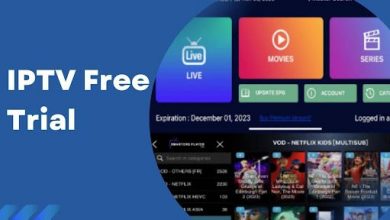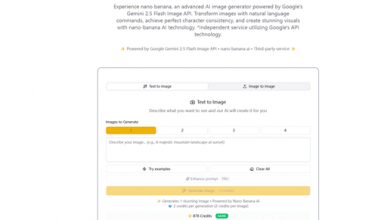Sales Process Game-Changers: 18 Revenue-Boosting Tactics Revealed

Discover game-changing tactics to boost your sales revenue. This article presents key insights from industry experts on optimizing your sales process. From implementing behavior-based scoring to tailoring solutions for clients, learn how to transform your approach and drive measurable results.
- Implement Behavior-Based Scoring
- Develop Data-Driven Lead Qualification Framework
- Restructure Sales Around Customer Moving Timelines
- Rewrite Content Using Customer Language
- Listen and Tailor Solutions to Clients
- Secure Commitment Before Education
- Sell Measurable Financial Outcomes
- Streamline Processes for Sales Efficiency
- Shift to Consultative Sales Approach
- Create Dynamic, Collaborative Sales Playbook
- Automate Incentive Compensation System
- Forge Strategic International Partnerships
- Build Full Account Management Structure
- Qualify Leads with Tough Questions
- Tailor Outreach to Client Pain Points
- Incorporate Custom Visual Renders
- Introduce Simplified Fixed-Price Packages
- Invest in Comprehensive Sales Coaching
Implement Behavior-Based Scoring
I eliminated stage-based forecasting and replaced it with behavior-based scoring. We stopped assuming a deal at “Proposal Sent” was automatically 70% likely to close. Instead, we built a model inside Salesforce that weighted actual buyer activities—calendar invites accepted, email response time, number of stakeholders engaged, and document view duration.
This change forced us to quit guessing and start measuring how prospects actually behaved. The results hit us fast. Within one quarter, our forecast accuracy improved by 28%. Even better, our close rate on qualified deals jumped 15%. Why? Because reps stopped wasting time on deals sitting in the right stage but going nowhere, and focused on opportunities showing real buying signals.
We tracked everything inside Salesforce—comparing deal age, weighted behavior score versus traditional stage percentage, and final outcome. That side-by-side comparison confirmed what I’d suspected: activity patterns predict deals better than declared intent every single time.
Marcin Pienkowski, Head of Salesforce, Think Beyond
Develop Data-Driven Lead Qualification Framework
The most transformative change we made to our sales process was implementing a rigorous, data-driven lead qualification framework. By analyzing information from various touchpoints such as website interactions, social media engagement, and purchase history, we gained a clearer picture of what was actually driving our customers’ decisions. We developed a proprietary scoring model that ranked leads based on behavioral signals and demographic fit.
To measure effectiveness, we tracked several metrics: lead conversion rates by different segments (including lead source, campaign, and demographic characteristics), sales growth percentage compared to previous periods, and sales cycle length. The results were remarkable – our sales team’s efficiency increased by 43% as they focused on the highest-potential prospects. Our overall close rate improved from 22% to 38%, and total revenue grew by 61% year-over-year.
The qualification framework proved particularly valuable because it eliminated the subjective “gut feeling” approach to prioritizing opportunities. Instead of pursuing every lead with equal effort, our representatives concentrated their time on prospects showing genuine buying signals. An unexpected benefit was improved sales team morale—representatives were no longer wasting time with poor-fit prospects who were unlikely to convert, which reduced frustration and increased commission earnings.
Daniel Lynch, Digital Agency Owner, Empathy First Media | Digital Marketing & PR
Restructure Sales Around Customer Moving Timelines
Restructuring our sales process around customer moving timelines rather than traditional sales stages created unprecedented revenue growth across our operations.
After analyzing thousands of customer interactions, we discovered that prospects responded entirely differently based on their moving urgency, yet our sales approach treated everyone identically regardless of timeline.
We implemented a dual-track system where immediate movers (within 30 days) received streamlined quotes and direct connections to service providers, while future movers entered a value-based nurturing sequence focusing on planning tools and preparation checklists.
This timeline-based approach increased conversion rates by 47% for urgent moves and improved long-term lead nurturing effectiveness by 34%, with both metrics tracked through our CRM pipeline analytics.
The most revealing measurement came from analyzing customer acquisition costs against lifetime value for each timeline segment.
We discovered that future movers, though requiring longer nurturing, ultimately spent 28% more and were twice as likely to refer others compared to urgent movers.
This insight allowed us to optimize marketing spend allocation based on the true revenue potential of each customer segment rather than just immediate conversion metrics, creating sustainable growth beyond the initial process change.
Vidyadhar Garapati, CEO, Movers.com
Rewrite Content Using Customer Language
We rewrote every part of our sales content using actual customer language pulled from recorded calls and support emails. Previously, our team had been relying on industry jargon and spec-heavy explanations that didn’t connect with what buyers were really asking. Once we shifted to using phrases people already used—such as “fit this in a small room” or “won’t make them feel like they’re in a hospital”—conversions on our top product page increased by 24 percent over eight weeks.
We measured results through page engagement, call duration, and close rates tracked in our CRM. The impact came from clarity, not volume. Customers moved faster through the buying process because they no longer had to translate what we were saying. This also gave the sales team more confidence, as they could meet the customer at their level without over-explaining.
This wasn’t a branding refresh. It was a language fix that made the process frictionless.
Kyle Sobko, Chief Executive Officer / Marketing Specialist, SonderCare
Listen and Tailor Solutions to Clients
One of the best things we did to improve sales was to stop leading with the product. Instead of jumping into features or pricing, we started by actually listening, asking clients about their office culture, what their team liked, and what their sustainability goals were. It shifted the conversation. We stopped sounding like a vending supplier and started sounding like a partner.
I remember one client who thought they just wanted a basic snack machine. But once we got talking, it turned out they were dealing with low staff engagement. So we suggested a setup with healthier options, contactless payment, and usage data they could track. They liked the idea so much, they rolled it out across multiple offices. That one conversation doubled the deal.
To see if it was working, we looked at average deal size and how long it took to close. Within a few months, deal size went up by a third, and we started closing faster. It wasn’t just about selling more; instead, it was about selling smarter.
Hayley Kirkby, Wholesale Sales Manager, Connect Vending
Secure Commitment Before Education
The most impactful change I made was removing friction between decision and action. In sales, speed wins. We stopped trying to educate first and close second. Instead, we flipped it. We trained our teams to secure the commitment first, then provide the education during onboarding. That single shift compressed our sales cycle. Customers didn’t lose interest mid-process. Reps stopped drowning in objections. We moved from persuasion to agreement.
We tracked it by obsessing over sales velocity. Not top-line revenue. Not volume. Velocity. We measured the time between the first contact and the contract. We measured the close rate by lead source and rep. We ran heat maps to see where prospects fell off. We stopped guessing and started managing with numbers. I come from sales leadership at scale—Comcast, Vivint—so I learned early that if you don’t measure the process, you manage by gut. And the gut doesn’t scale.
The results were immediate. Shorter cycles. Fewer fall-offs. Higher close rates. Sales teams knew exactly where to improve. New hires ramped up faster. We weren’t guessing anymore. The process was built, measured, and optimized in real time. I’d seen this work at billion-dollar companies. I brought the same intensity and discipline to a smaller team. And it worked because we didn’t overcomplicate it. We kept our eye on the right number and held everyone accountable.
Phill Stevens, Founder & CEO, Avail Solar
Sell Measurable Financial Outcomes
The most impactful change to our sales process was shifting from selling services to selling measurable financial outcomes—complete with specific metrics and timeframes.
Instead of pitching “CFO services,” we started quantifying exactly what improvements prospects could expect: “We’ll reduce your monthly close time from 22 days to 12 days within 90 days, and identify at least $75,000 in tax savings within 6 months.” This approach increased our close rate from 18% to 29% despite raising prices.
The key wasn’t just making promises, but tracking delivery against them. We built a simple dashboard showing each client’s committed outcomes and progress toward them. This created accountability but also demonstrated when we exceeded targets, which drove significant referral business.
My advice: Replace generic service descriptions with specific, measurable outcomes tied to dates. This shifts sales conversations from price comparisons to value discussions and creates natural urgency without artificial pressure tactics.
I’ve found that clients will pay premium rates when they can clearly see how your services translate into specific financial gains within defined timeframes.
John Frazier, CEO, indinero
Streamline Processes for Sales Efficiency
As a manufacturer deeply rooted in automotive best practices like APQP, rigid processes are integral to our operations. However, we recognized that efficiency is critical to ensure tools remain user-friendly for the sales team and do not hinder customer success. Our 6-phase APQP process assigns sales responsibility for Phases 0 and 1, which focus on identifying, scoping, and quoting opportunities.
Initially, Phase 0 created bottlenecks in meeting customer deadlines for proposals, risking our competitiveness. To address this, we streamlined Phase 0 by refining review and approval workflows, maintaining its core purpose while accelerating timelines. This balance allowed the sales team to operate more dynamically without sacrificing the rigor of our APQP framework.
We tracked reductions in proposal turnaround time to quantify efficiency gains, monitored customer feedback on responsiveness to gauge satisfaction improvements, and analyzed win rates to assess competitive positioning. Most critically, we correlated these metrics with revenue growth, confirming that faster, more agile Phase 0 processes enhanced our ability to secure deals.
Rob Osgood, Director, Sales and Marketing, AdvancTEK
Shift to Consultative Sales Approach
One of the most impactful changes I made to my sales process was shifting from a transactional approach to a consultative one. In my early days, twenty years ago, my outreach was very pitch-focused—I’d talk about the services I offered, my placement record, and what I could deliver. I started noticing that the conversations weren’t really happening.
So I flipped the script. I changed to a more consultative approach and offered Fractional Talent Acquisition services. So it was more about how I could help instead of leading with what I do. It allowed for asking better questions about a client’s hiring challenges, growth plans, and internal team dynamics. I wanted to position myself as a true partner, not just another recruiter.
To support that shift, I rewrote my sales “scripts,” focused on active listening during calls, and built in a discovery phase before offering any solutions. I also started tracking more than just conversions—I paid attention to how long prospects stayed engaged, how many follow-ups it took to close, and the quality of feedback I was getting from initial conversations.
Within days, no joke, I saw at least a 30% increase in my close rate, and the average deal size grew because clients started trusting me with more complex and strategic roles.
Jessica Glazer, Founder, MindHR Inc
Create Dynamic, Collaborative Sales Playbook
Optimizing our sales playbook was a key move that boosted our revenue. We realized that each sales representative had unique strengths, and our old playbook wasn’t tapping into that diversity. So, we started treating it like a living document. It wasn’t just about adding best practices; it was about capturing the nuances of what each team member did differently when they closed a deal. This way, everyone could learn and experiment with these tactics.
Effectiveness was measured by tracking metrics like lead conversion rates and deal size before and after implementing the updated playbook. One lesser-known method we found effective was using peer reviews in real-time during sales calls. Representatives would pair up, with one observing how the other handled objections or built rapport. The insights gained were then fed back into the playbook, making it a real-time reflection of our evolving strategy. This peer feedback loop wasn’t just insightful—it also empowered our representatives to engage more effectively with clients, which led to measurable improvements in their sales performance.
Ryan Gray, CEO, SGW Designworks
Automate Incentive Compensation System
We implemented a fully automated incentive compensation system that aligned representative behavior with strategic goals. By eliminating manual spreadsheets and introducing real-time visibility into earnings, representatives became more engaged and proactive. This drove a measurable lift in pipeline activity and deal velocity. We tracked effectiveness by comparing pre- and post-implementation metrics—namely, a 23% increase in quota attainment, 17% faster sales cycles, and improved forecast accuracy. The transparency and trust it created turned compensation from a pain point into a performance lever.
Alex Kulik, CEO, ZenCentiv
Forge Strategic International Partnerships
Having identified certain regions as high-demand zones, we forged partnerships with local agents to help meet our set goals by offering more competitive quotes and short response windows. We concentrated our efforts on areas where either pricing or logistics had posed challenges to us in the past. The agents managed in-country operations such as customs clearance, which helped our team focus on new business opportunities and strategic accounts.
The impact was evaluated by measuring the regional revenues and the new customer retention rate in the target markets. Within 6 months, we noticed a surge of 40% in inquiries from those regions, and client satisfaction scores increased due to improved shipping timelines and reduced delays. These partnerships greatly improved the overall customer experience and seamlessly improved referral and revenue figures.
Joe Giranda, Director of Sales & Marketing, CFR Classic
Build Full Account Management Structure
The most impactful shift we made was building a full account management structure. We realized that growth comes not from one-time transactions, but from consistently showing up for our clients long after the first conversation. We introduced dedicated account and technical managers who proactively support each client’s evolving needs. The goal was simple: build real partnerships, solve problems before they become blockers, and ensure every user gets the most value from what we offer. We measured success by tracking client retention, product adoption, and overall engagement. Over time, we saw more clients staying with us longer, expanding their usage organically, and recommending us to others. It reinforced our belief that when you focus on delivering long-term value, growth takes care of itself.
Ignas Platukis, Head of Sales, IPRoyal
Qualify Leads with Tough Questions
I made a measurable difference when I became ruthless about qualifications in my sales process. Previously, I used to answer every phone call, pursue every opportunity, and give equal weight to all interests. However, I started to notice I was investing too many resources in people who were never going to buy. So, I rewired my practice: I began asking tougher upfront questions about budget, authority, urgency, and whether the problem was a “nice to solve” or a “must solve.” If prospects weren’t serious, I passed on the opportunity.
I also stopped leading with the product. Instead, I made the conversation about their business, focusing on what was broken, what it was costing them, and why it mattered now. That shift altered how prospects interacted. They weren’t simply listening to a pitch; they were engaging in a dialogue about their objectives and how we could help them achieve them. This approach established trust more quickly and made the sales process feel more collaborative than persuasive.
To quantify the impact, I monitored the conversion rate, deal size, and time to close. Soon, I was closing more deals and earning more revenue—just not as many total deals. Close rates increased, sales cycles decreased, and average contract value also grew. More direct conversations, fewer wasted ones, better outcomes. That’s how I knew it worked.
Jason Sildir, Sales Manager, Carbarn
Tailor Outreach to Client Pain Points
We stopped sending generic follow-ups and started tailoring outreach based on client pain points uncovered during discovery. We also cut our proposal process in half by creating templates for the structure while keeping messaging custom. The close rate improved, and we saw deals moving faster. We track it all through HubSpot so we can see exactly where momentum builds or falls off.
Incorporate Custom Visual Renders
The most impactful change we made was incorporating custom visual renders into our outreach and sales process. Lenticular printing is inherently visual. It’s tough to explain, and even tougher to sell with words alone. So instead of relying on mockups or generic samples, we started producing short, personalized videos or animations that show prospects exactly what their product, packaging, or signage would look like as a lenticular print.
This simple shift completely changed the conversation. It eliminated guesswork, got clients excited, and shortened our sales cycle. We weren’t just telling them what we could do; we were showing them, using their brand.
We measured its effectiveness by tracking close rates on accounts that received these custom renders versus those that didn’t. The difference was clear. Our close rate increased by nearly 40 percent on accounts that saw a custom lenticular render. Not only did we see higher conversions, but we also attracted higher-value projects because clients could instantly grasp the impact lenticular could have in a retail or marketing setting.
Greg Schuman, Partner, World3D Lenticular Printing
Introduce Simplified Fixed-Price Packages
Previously, our sales approach involved lengthy consultations and complex proposals, which often delayed decision-making and led to lost opportunities. To address this, we streamlined our sales process by introducing simplified, fixed-price packages for our most popular services. This change made it easier and quicker for clients to understand our offering and make purchasing decisions.
We measured the effectiveness of this adjustment by closely tracking two key metrics: average sales cycle length and overall conversion rates. Within six months, our average sales cycle shortened from approximately three weeks to just one week, and our conversion rate improved by over 25%. As a direct result, we achieved a revenue increase of approximately 30% compared to the previous period.
This experience taught us that simplifying the buying process can significantly reduce friction and hesitation, leading to quicker decisions and increased sales. I strongly recommend that businesses regularly review their sales processes from the customer’s perspective to identify and remove unnecessary complexity.
Aleksei Kariakin, General Manager, Uniwide
Invest in Comprehensive Sales Coaching
One of the most impactful changes we made was investing in sales coaching, and it genuinely moved the needle. We realized that many of our sales representatives had the potential, but they needed more support in areas like handling objections, running better discovery calls, and closing confidently. So instead of just focusing on hitting quotas, we built a coaching program around skill development and real-time feedback.
The results were clear. We started tracking metrics such as conversion rates, average deal size, and sales cycle length before and after coaching sessions. Within a few months, we saw deals closing faster, fewer leads falling through the cracks, and a noticeable boost in team morale. It wasn’t just about selling more; it was about selling smarter. I’d say to any business: don’t just throw more leads at your team. Help them level up their approach; that’s where the real growth happens.
Sara Cooper, Director of Web Strategy, Simpro
Related Articles
- Real-Time Analytics in E-Commerce: Boosting Sales with Data
- Accelerating Digital Sales with Hyper-Personalization: A Game-Changer
- Mastering SEO for E-commerce: Tactics to Skyrocket Traffic and Boost Sales





